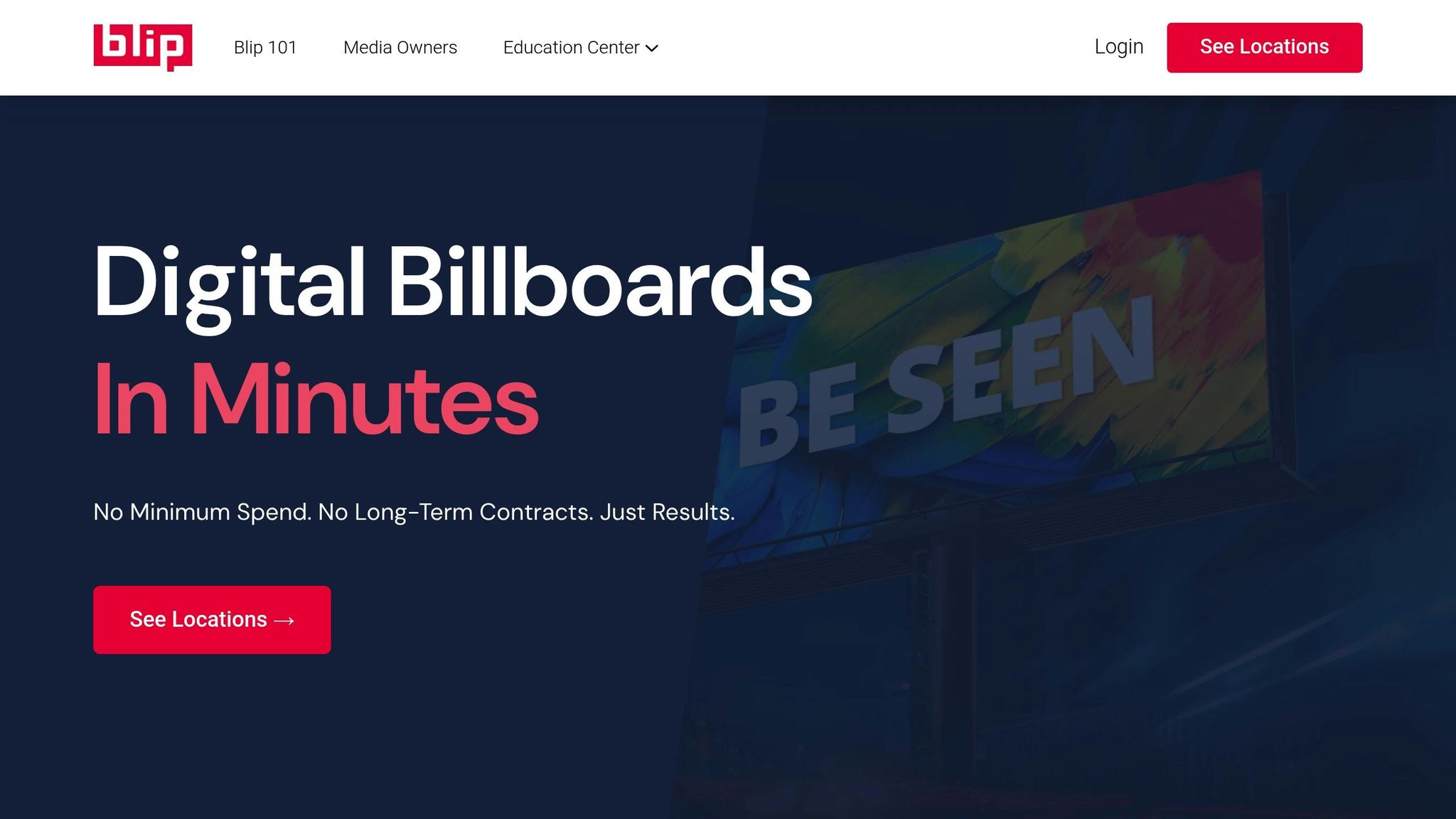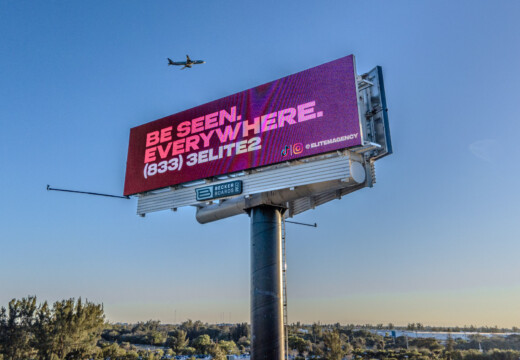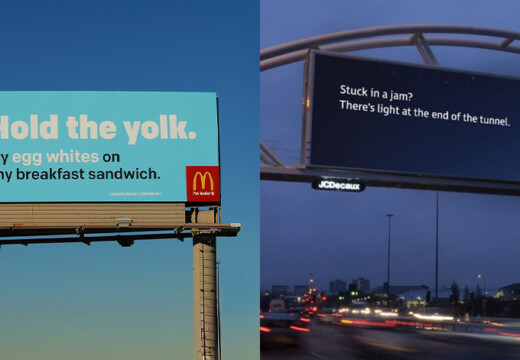Behavioral targeting in Digital Out-of-Home (DOOH) advertising uses real-time data to make billboards smarter and more effective. Instead of showing the same static message, digital billboards adjust their content based on audience behavior, location, time of day, and even weather. This means ads are more relevant, cost-efficient, and tailored to the people nearby.
Key Points:
- How It Works: Data from mobile signals, traffic, and sensors identifies audience patterns.
- Real-Time Updates: Ads change dynamically based on who’s nearby and when.
- Advantages: Better targeting, smarter budget use, and clear performance metrics.
- Use Cases: Retail, tourism, and entertainment campaigns benefit the most.
- Privacy: Anonymous data ensures compliance with privacy laws.
By combining data and technology, DOOH advertising offers businesses a way to reach the right audience at the right time, all while staying flexible and measurable.
AdTech Trends: Digital Out of Home (DOOH) Opportunities for …
Behavioral Targeting Process in DOOH
Data analysis and instant updates turn traditional billboards into dynamic, responsive campaigns.
How Data Is Collected
Modern DOOH platforms pull information from various sources:
- Mobile signals: Track foot traffic and how long people stay in one place.
- Environmental sensors: Measure weather and lighting conditions.
- Traffic monitoring: Count vehicles and assess their speeds.
- Point-of-sale data: Observe local shopping habits.
This data helps advertisers make smarter decisions about what to display and when. It also allows for audience segmentation based on behavior and location.
Breaking Down Audience Insights
Once the data is collected, it’s analyzed to identify key audience groups. This involves looking at:
- Movement patterns: Where and when people move through specific areas.
- Demographics: Common traits among people in certain locations.
- Time-based trends: When different types of audiences are most active.
Delivering Ads in Real Time
Using audience insights, digital billboards can change their content to match the time of day and the people nearby. Here’s how it works:
| Time Period | Audience Characteristics | Ad Focus |
|---|---|---|
| Morning Rush | Commuters on the go | Short, attention-grabbing messages |
| Midday | Local shoppers and workers | Deals or location-specific offers |
| Evening | Entertainment seekers | Promotions for events or activities |
"Working with Blip has given Mr. Charlie’s the momentum to get our new location on the map while accelerating growth for our original location", says Paul Willey, Owner of Mr. Charlie’s Chicken Fingers.
The system keeps track of ad performance and adjusts the content to maintain audience interest.
Key Advantages of DOOH Behavioral Targeting
Data-driven insights are transforming DOOH campaigns, making them more precise and cost-effective.
Improved Ad Targeting
Digital billboards now tailor messages based on factors like time, local events, demographics, and weather. This makes billboard advertising more responsive to what viewers are doing and interested in.
Here’s how digital billboards adjust:
- Time of day and traffic flow
- Local happenings and activities
- Demographic patterns in different areas
- Weather and seasonal changes
This approach not only increases ad relevance but also reduces unnecessary spending.
Smarter Budget Use
Targeted advertising ensures your budget works harder by focusing on the right audience at the right time. This strategy helps businesses get more out of their ad spend by leveraging:
| Targeting Factor | Cost-Saving Impact |
|---|---|
| Time-Based Display | Ads run during peak audience hours |
| Location Intelligence | Focuses on high-traffic areas |
| Audience Matching | Avoids showing ads to irrelevant viewers |
| Dynamic Content | Updates messaging to boost engagement |
Clear Performance Metrics
DOOH platforms provide detailed analytics, giving businesses the tools to measure and refine their campaigns. Metrics include:
- Engagement rates by time and location
- Performance across audience segments
- Real-time impressions and demographic data
- ROI tracking through integrated analytics
"Blip works for us. It’s a different medium, and it brings a lot of exposure. It sets us apart from the rest of the [competition], and that’s what I like." – Kimberly Pinkson, Owner, Pretty In Pinkston
sbb-itb-2e2e93f
Industry Use Cases
With its precision and measurable results, DOOH is being used across various industries to connect with audiences in impactful ways.
Retail Marketing
Retailers are using DOOH to attract more customers and boost sales. By studying shopper behavior, they fine-tune their ads to reach people at just the right moments. Local stores, in particular, have seen success by using targeted campaigns to draw in visitors and build brand awareness.
Tourism Ads
Tourism campaigns use DOOH to deliver timely messages to travelers. By adjusting content based on real-time factors like weather, events, or busy travel periods, they ensure their ads are seen when they matter most, making a bigger impact on potential tourists.
Entertainment Promotion
Entertainment venues rely on behavioral targeting to increase attendance. DOOH allows them to adjust content on the fly, aligning with local events or audience preferences. This flexibility helps them engage more effectively and boost turnout for shows, concerts, and other events.
Using Blip for Behavioral Targeting

Blip takes the power of digital out-of-home (DOOH) advertising to the next level with tools that make behavioral targeting more precise and measurable. It transforms traditional billboard campaigns into dynamic, data-driven strategies.
Blip’s Targeting Tools
Through its interactive marketplace, Blip allows advertisers to focus on audience behavior by selecting billboards strategically. Metrics like daily impressions and average CPM help businesses pinpoint locations that match their audience’s movement patterns. Many industry professionals recognize how these tools are changing the game for outdoor advertising.
Flexible Campaign Management
Blip’s pay-per-play model, starting at just $20 per day, gives advertisers full control over their campaigns. Real-time bidding, conducted every 10 minutes, lets businesses fine-tune their strategies on the fly. This makes it especially effective for testing different audience segments or trying out new messaging.
The campaign moderation process is quick and efficient:
- Blip’s initial review: Completed in about 90 minutes
- Billboard owner approval: Typically finalized within 1–3 days
Once live, campaigns benefit from Blip’s detailed performance tracking, ensuring adjustments can be made as needed.
Performance Tracking
Blip’s analytics dashboard provides instant feedback on how well campaigns are performing. This data helps advertisers refine their approach and maximize results.
"Billboards are one of the most impactful ways to advertise, and with Blip, you spend a fraction of what you would end up paying elsewhere." – Ray Bowens, Founder, Hashtag-Vape
Here’s a breakdown of the key metrics Blip tracks:
| Metric | Purpose | Benefit |
|---|---|---|
| Daily Impressions | Tracks audience reach | See how visible your campaign is |
| Average CPM | Monitors cost efficiency | Manage your budget effectively |
| Location Performance | Evaluates site-specific results | Fine-tune your targeting |
| Real-time Bidding Data | Analyzes competitive trends | Adjust pricing strategies |
Current Challenges and Future Direction
Behavioral targeting has reshaped the advertising landscape, but it also brings challenges and opportunities for growth.
Privacy and Data Protection
As targeting methods grow more advanced, privacy concerns have become a central issue. Advertisers must prioritize ethical data practices by focusing on:
- Collecting anonymous data based on general trends rather than tracking individuals
- Using consent-driven targeting to comply with privacy laws
- Clearly communicating how data is used to build trust with audiences
While privacy measures are improving, advancements in targeting technology continue to evolve alongside them.
New Targeting Methods
Emerging technologies are unlocking new ways to refine DOOH advertising strategies. These methods aim to improve precision and cost-effectiveness, including:
- Real-time analysis of audience behaviors
- Tailored content that adapts dynamically to different viewers
- Integration across multiple channels for seamless campaigns
- AI-driven tools to enhance targeting capabilities
Market Growth
DOOH advertising is becoming more accessible, driving expansion and opening doors for businesses of all sizes. Some key trends fueling this growth include:
- Self-service platforms that simplify campaign management
- Budget-friendly options, starting as low as $20 per day
- Advanced analytics that provide clear insights for optimizing campaigns
- Quick campaign launches, thanks to faster approval processes
These factors are shaping a more dynamic and inclusive DOOH advertising market.
Conclusion
Key Takeaways
Behavioral targeting has reshaped DOOH advertising by blending the large-scale visibility of traditional outdoor ads with precise targeting methods. This allows businesses of all sizes to connect with their ideal audience while still leveraging the bold presence of digital billboards.
The progress in DOOH, combined with Blip’s adaptable and budget-conscious approach, opens the door for advertisers to secure premium ad placements without overspending.
What to Do Next
Use these steps to maximize your campaign’s effectiveness:
- Define clear goals: Know what you want to achieve before starting.
- Pick smart locations: Focus on areas where your audience is most active.
- Create eye-catching designs: Make sure your message grabs attention instantly.
- Monitor and adjust: Keep an eye on performance and refine your approach as needed.
The ability to use data for targeting, paired with real-time campaign management, empowers advertisers to achieve measurable outcomes while keeping the visual power of outdoor ads intact.
"Billboards are one of the most impactful ways to advertise, and with Blip, you spend a fraction of what you would end up paying elsewhere." – Ray Bowens, Founder, Hashtag-Vape


